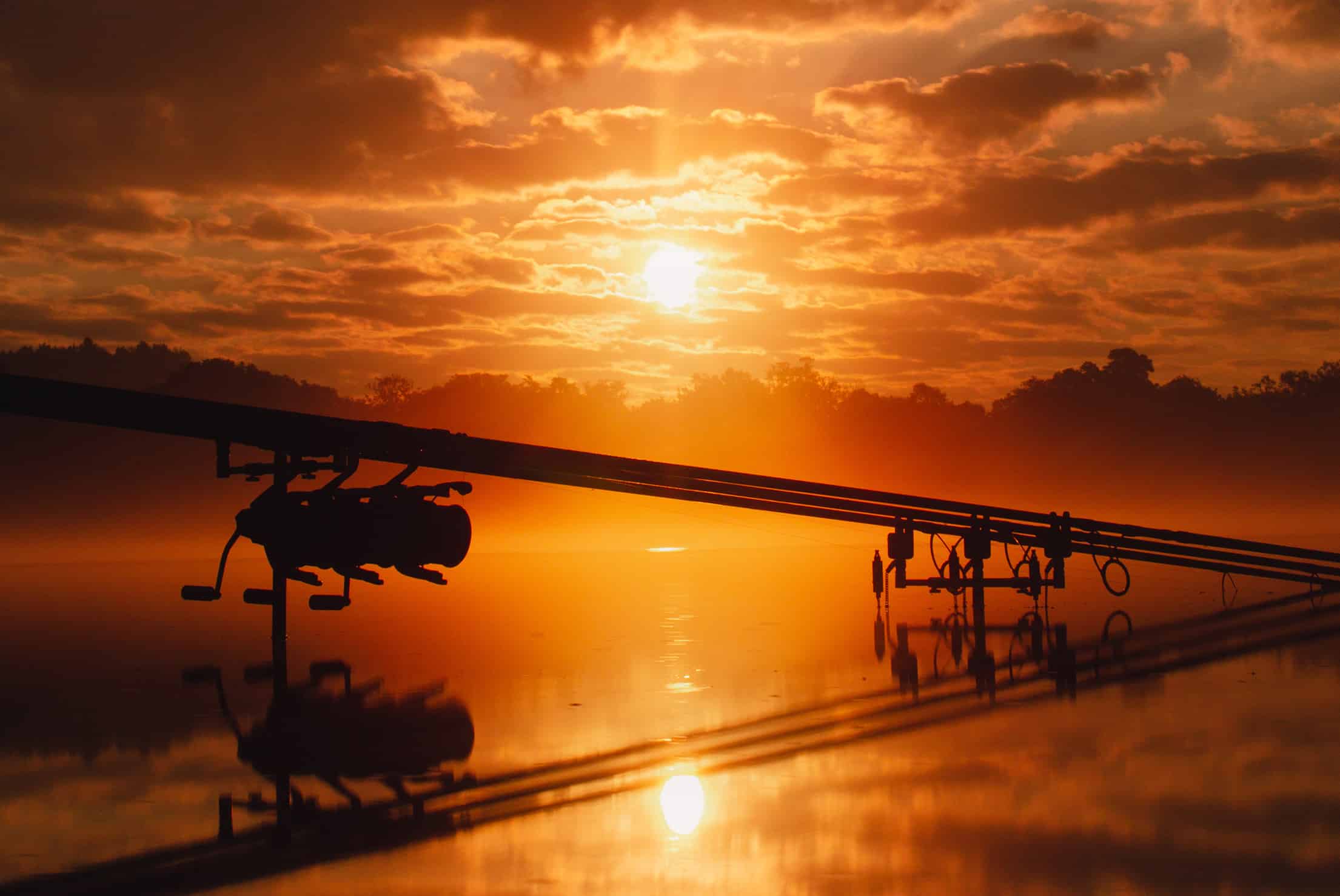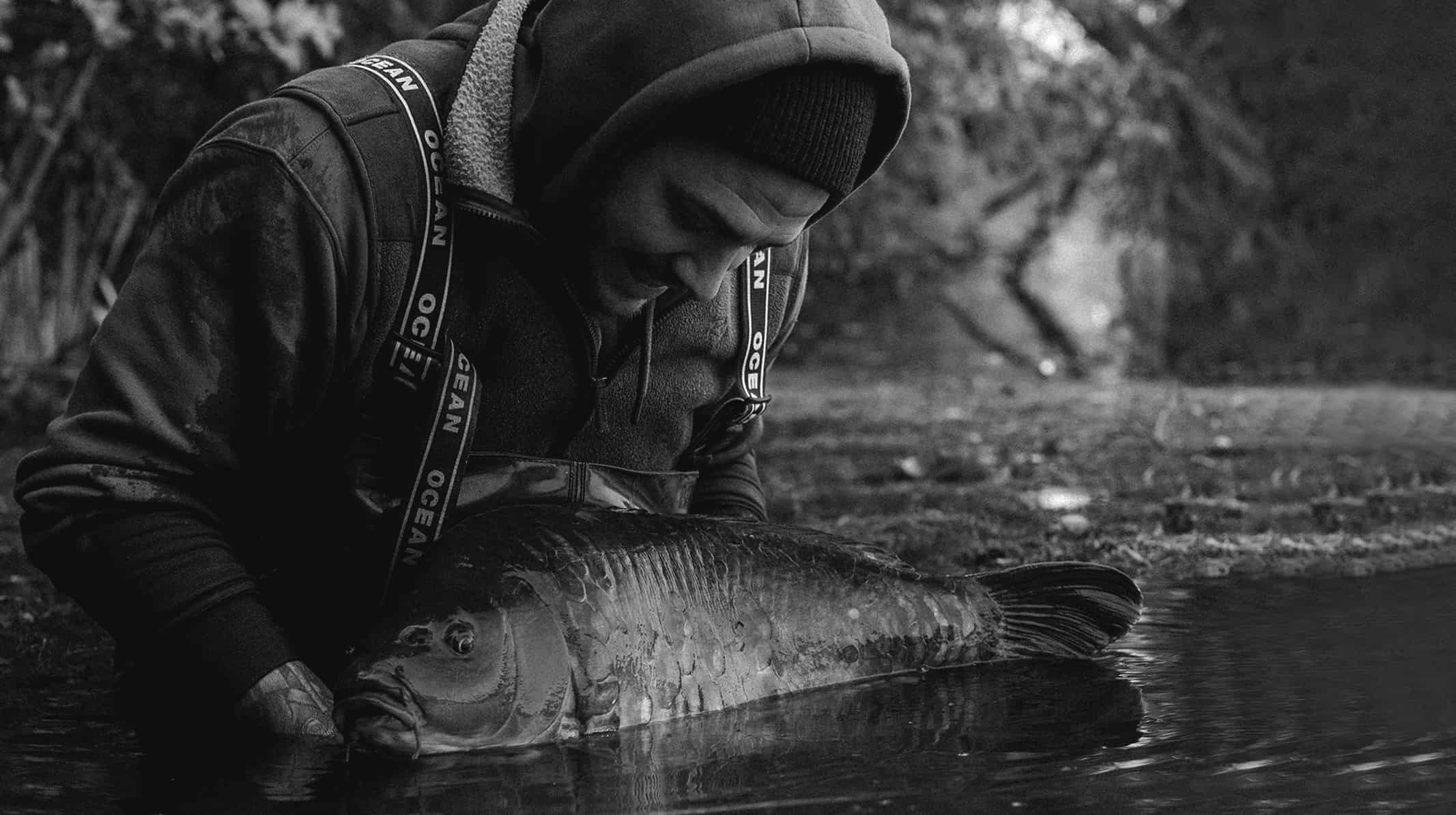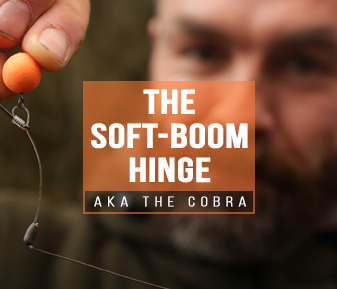Gaz Fareham explains why the Soft Boom Hinge aka 'The Cobra' is his go to rig - sharing his vast knowledge on the most effective set up to catch bites.
Question 1
When I hear the name Jester, I automatically think of Spomb rods being bent close to breaking point. For those anglers that know you personally, it's probably fair to say they know you best for your ability to fish effectively at insane ranges. Where did that all start for you?
It probably started for me when I was fishing over on a sailing lake. The lake in question had big areas of out of bounds and you frequently sat there watching fish showing at range, with me maxed out at 130 yards I was thinking to myself “I need to go further” and being the stubborn individual that I am, I hate being beaten, so just had to find a way of upping my game. I also started fishing another busy, big, low stocked pit and the angling pressure naturally pushed them out at range at times, so being able to fish these areas effectively was a huge advantage. With all these lakes having glaringly obvious opportunities to be had, I started to upgrade all my tackle to the sort of gear I’m using today; to be frank, my old gear just wasn’t fit for purpose! This was the beginning of a steep learning curve to try and achieve the sort of results I was striving for.
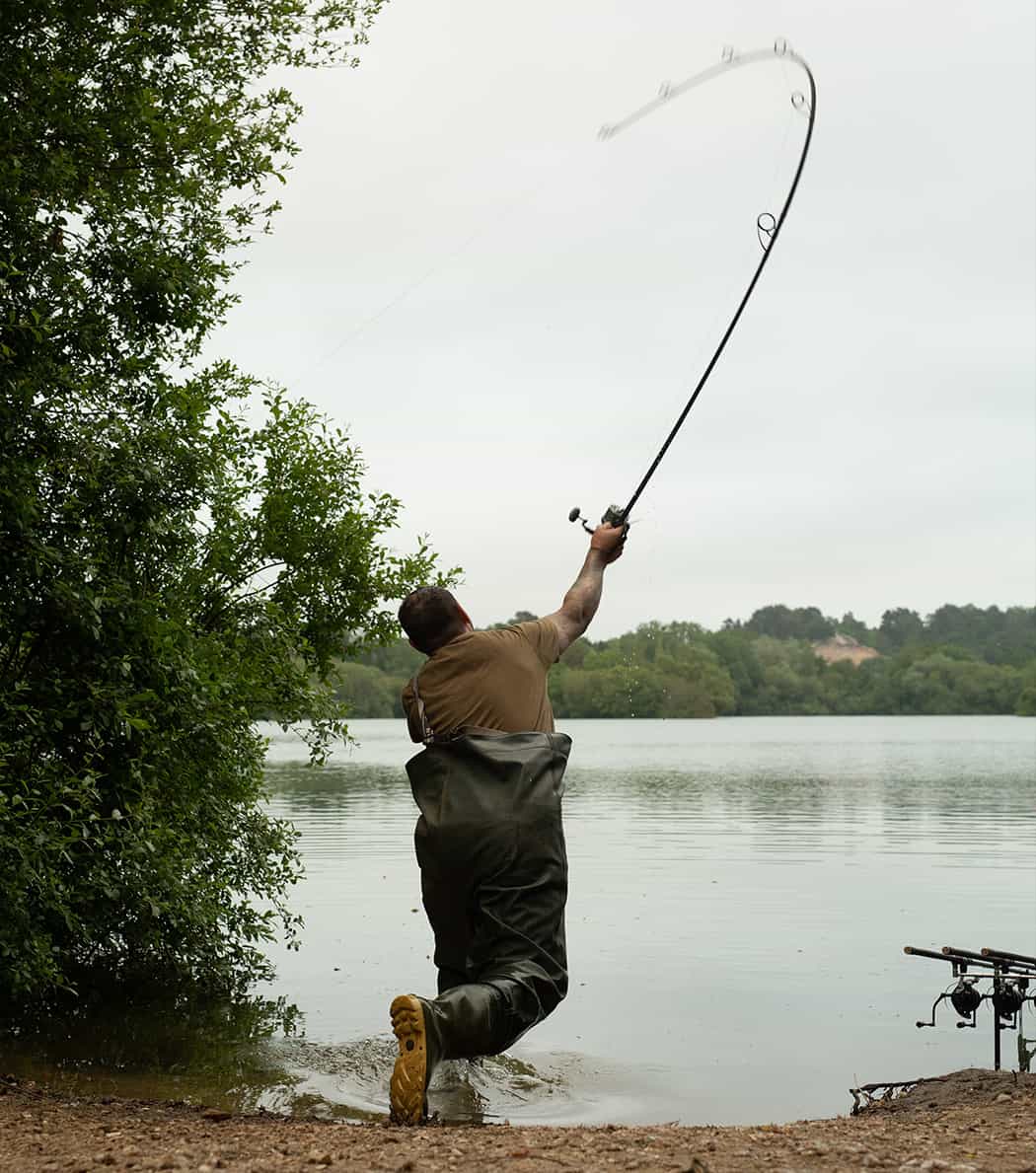
Question 1
When I hear the name Jester, I automatically think of Spomb rods being bent close to breaking point. For those anglers that know you personally, it's probably fair to say they know you best for your ability to fish effectively at insane ranges. Where did that all start for you?
It probably started for me when I was fishing over on a sailing lake. The lake in question had big areas of out of bounds and you frequently sat there watching fish showing at range, with me maxed out at 130 yards I was thinking to myself “I need to go further” and being the stubborn individual that I am, I hate being beaten, so just had to find a way of upping my game. I also started fishing another busy, big, low stocked pit and the angling pressure naturally pushed them out at range at times, so being able to fish these areas effectively was a huge advantage. With all these lakes having glaringly obvious opportunities to be had, I started to upgrade all my tackle to the sort of gear I’m using today; to be frank, my old gear just wasn’t fit for purpose! This was the beginning of a steep learning curve to try and achieve the sort of results I was striving for.

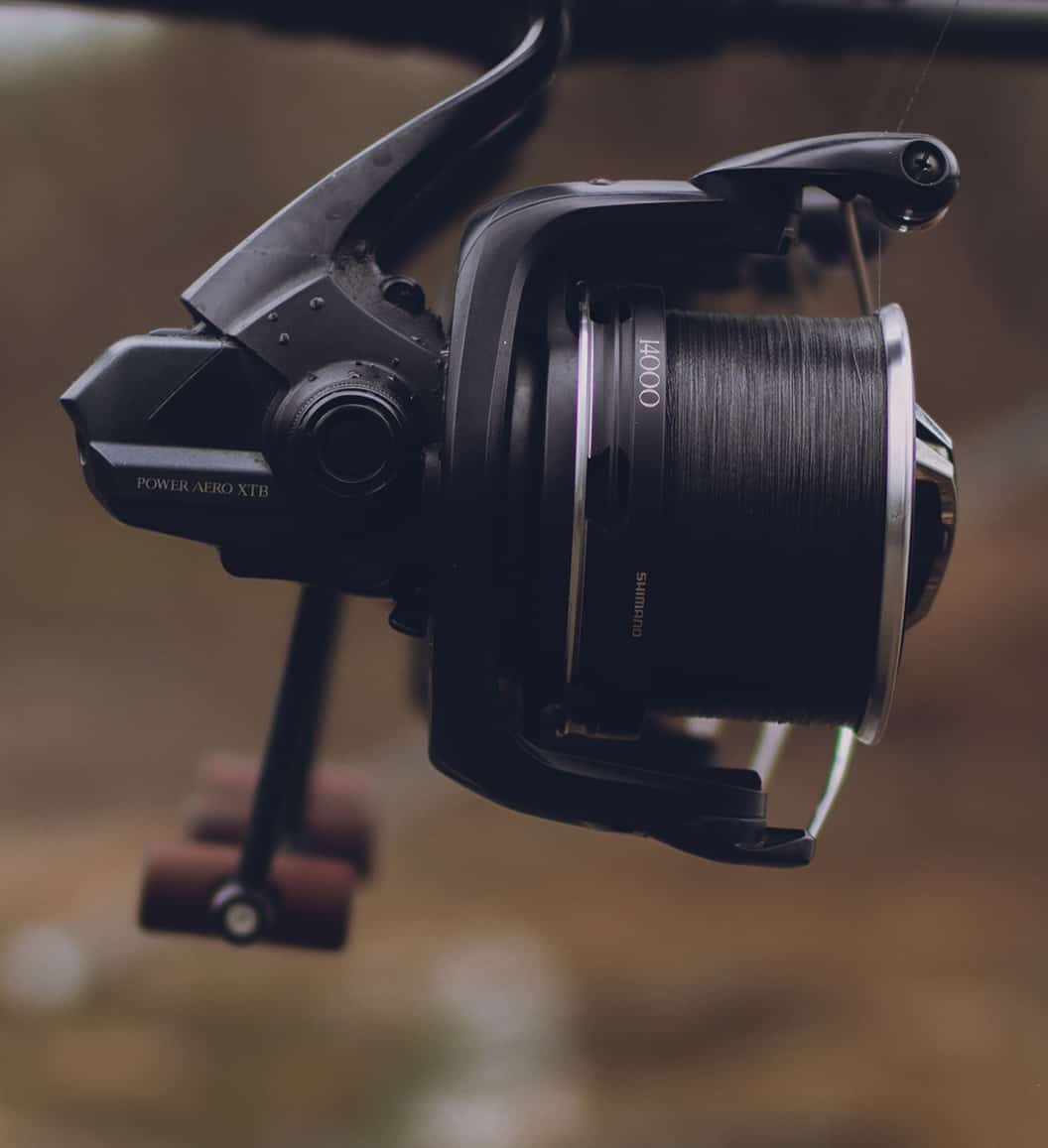
Question 2
You say, "steep learning curve", but how do you go from maxing out at 130 to then putting a rig to over 200 yards?
One of the key aspects is having the right tools for the job, so I switched from 12ft 3.5lb TC to 13ft 3-5oz distance rods, got a set of Shimano reels with their super slow oscillation and getting a decent distance braid that had the right balance of strength, smoothness and diameter. These are what I would call the fundamental changes in order to start getting on the right path to fishing extreme ranges effectively.
It was at this point that I decided to book a casting lesson with Terry Edmonds to absorb all his years’ worth of knowledge from the tournament casting game - I can’t recommend it enough, whatever your ability. Simple things from looking a lot higher when you cast instead of looking at the horizon marker you want your lead to land on. The timing of your body movements is key, so they are all working in synergy to shift body weight as quickly as you can, to propel that lead into the abyss. The list goes on and on, which is the beauty of fishing, you never stop learning, especially if you want to stay ahead of everyone else.
Question 2
You say, "steep learning curve", but how do you go from maxing out at 130 to then putting a rig to over 200 yards?
One of the key aspects is having the right tools for the job, so I switched from 12ft 3.5lb TC to 13ft 3-5oz distance rods, got a set of Shimano reels with their super slow oscillation and getting a decent distance braid that had the right balance of strength, smoothness and diameter. These are what I would call the fundamental changes in order to start getting on the right path to fishing extreme ranges effectively.
It was at this point that I decided to book a casting lesson with Terry Edmonds to absorb all his years’ worth of knowledge from the tournament casting game - I can’t recommend it enough, whatever your ability. Simple things from looking a lot higher when you cast instead of looking at the horizon marker you want your lead to land on. The timing of your body movements is key, so they are all working in synergy to shift body weight as quickly as you can, to propel that lead into the abyss. The list goes on and on, which is the beauty of fishing, you never stop learning, especially if you want to stay ahead of everyone else.

I must admit after a season of pushing a standard distance rod to its limits each weekend, combined with hauling large weed-beds at certain times of year, the inevitable breaking of rods started happening, which I can assure you is no fun on the body. This is when I decided to make the switch to a 13ft 5lb TC spod rod as a fishing rod, as I felt I had the power and hand speed to compress it and I’ve never looked back since. There is a wide variety of spod rods out there, some like broom handles and others that are far more compressible. I always get asked “are you not worried about hook pulls?”, and the simple answer is “no”. I’m fishing for fish getting on for 60lb, so having that extra power and backbone in the blank is invaluable to stop fish and get them out of weed. You just have to be more mindful playing fish under the tip and have full confidence in your rig’s hooking abilities.
Another very important factor is all the tiny little refinements I’ve had to make to terminal tackle, such as using Tungsten Droppers instead of putty so it’s not sliding down your boom and altering the balance of your hookbait. Instead of using loops for my rigs, which can lead to more tangles, I use a ring swivel instead, so it still has the movement, but in a slightly more controlled way. I use Long Anti-Tangle Sleeves to maintain good rig separation in flight to make it virtually tangle proof, providing you hit your clip right. Then there is using small 11mm ultra-buoyant hookbaits to aid aerodynamics, and also to make sure that rig performs the same, in case due to weather, I have to leave my rigs out for up to 3 days straight.
One of the other key things with range fishing is having no fear and full confidence in your gear, as I hear so many anglers say they are worried about breaking things. If you have the right rods, the right braids, are tying the correct leader knots and are using bullet proof terminal tackle, you shouldn’t have any more drama than fishing at any other range.
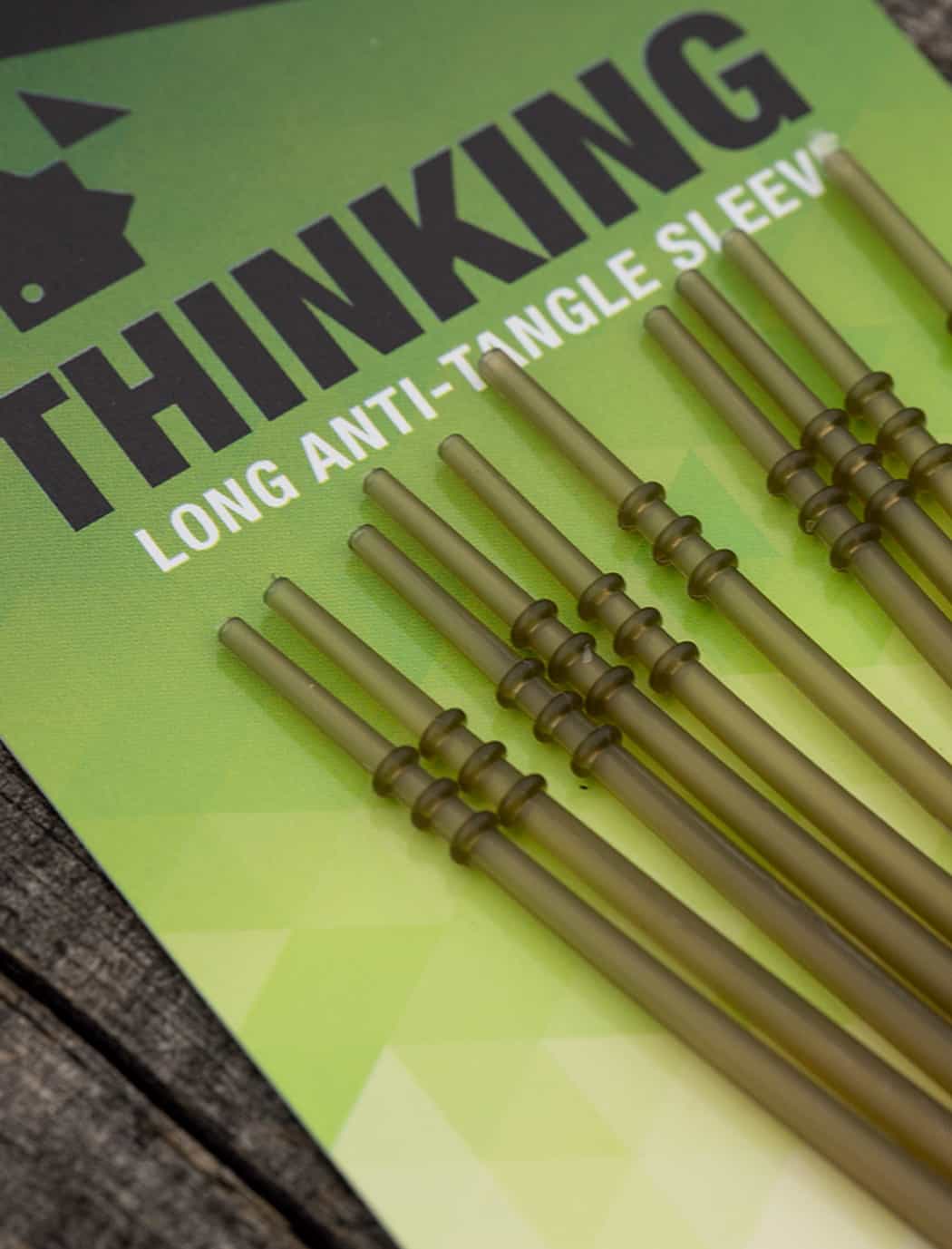
I must admit after a season of pushing a standard distance rod to its limits each weekend, combined with hauling large weed-beds at certain times of year, the inevitable breaking of rods started happening, which I can assure you is no fun on the body. This is when I decided to make the switch to a 13ft 5lb TC spod rod as a fishing rod, as I felt I had the power and hand speed to compress it and I’ve never looked back since. There is a wide variety of spod rods out there, some like broom handles and others that are far more compressible. I always get asked “are you not worried about hook pulls?”, and the simple answer is “no”. I’m fishing for fish getting on for 60lb, so having that extra power and backbone in the blank is invaluable to stop fish and get them out of weed. You just have to be more mindful playing fish under the tip and have full confidence in your rig’s hooking abilities.
Another very important factor is all the tiny little refinements I’ve had to make to terminal tackle, such as using Tungsten Droppers instead of putty so it’s not sliding down your boom and altering the balance of your hookbait. Instead of using loops for my rigs, which can lead to more tangles, I use a ring swivel instead, so it still has the movement, but in a slightly more controlled way. I use Long Anti-Tangle Sleeves to maintain good rig separation in flight to make it virtually tangle proof, providing you hit your clip right. Then there is using small 11mm ultra-buoyant hookbaits to aid aerodynamics, and also to make sure that rig performs the same, in case due to weather, I have to leave my rigs out for up to 3 days straight.
One of the other key things with range fishing is having no fear and full confidence in your gear, as I hear so many anglers say they are worried about breaking things. If you have the right rods, the right braids, are tying the correct leader knots and are using bullet proof terminal tackle, you shouldn’t have any more drama than fishing at any other range.

Question 3
Before we talk about the sailing lake, can you just give us a brief insight into the trials and tribulations of adding 70 plus yards to your cast?
Where do I start? There were so many changes; some huge, some incremental, but they all added up to being able to achieve what I set out to do. Probably the biggest upgrade, as I have already mentioned, was switching to spod rods but getting to that point meant breaking a few rods to realise that I had the hand speed to compress one. Breaking rods when you’re paying for them is no fun on the body or the bank balance.
Then you come onto the subject of braids and how each one’s properties differ dramatically from one to the next. Then you finally find one you’re happy with, and typically they change the strand count and the weave, and suddenly it behaves completely differently and you’re back to square one. I dread to think how much money I’ve spent on braids, trying to find the perfect one that has the right balance of strength, smoothness, diameter and colour longevity. I was even colouring in my old green braids black, with a marker pen for years after witnessing fish feeding on my spots within minutes of reeling in the bright green ‘tram lines’. The next weekend, I started catching off the same spot – coincidence… I think not! Recently though, certain braids are using an actual black Dyneema, rather than it being dyed, so the days of green braids going white within a couple of weeks are gone!
Like the braids, I had similar issues with leadcore too, which I prefer when using braided shock leaders, as I have never liked the thought of the tubing sliding up the leader and the fish having no protection against its flanks. The issue with a lot of leadcores, is the lead disintegrates on the cast, with some having 6 to 8 pieces of lead poking out all over the place after one cast alone. Yet again, I was having to try various brands leadcore at the time to figure out what one could actually cope with the forces it was being put under.
I initially started off on heli’s, as that’s what I had always used, but after stories from Matty ‘Action’ Jackson when he used a boat to check rigs on a different venue – he told me how they tangled a lot more than you realised with coated braids at range. He then went on to say how you’d reel them back in to redo them and they’d come back fine. I will hold my hands up and say I didn’t do anything with this information initially, until I actually reeled in two of my rigs one morning still tangled! That was it for me, ‘Action Jackson’ was right, and I started using lead clips in conjunction with anti-tangle sleeves, to create that separation needed to avoid tangles. It also meant I could get away with fishing longer rigs than I had previously, which was quite different from what everyone else was doing at the time and it also meant I could still fish my hinge rigs over a variety of substrates, just making the booms even longer if need be. It also meant I could set my tail rubbers very finely to eject the lead, but means you have to smash your clips right every cast. Having to use a 5oz lead to get the range and also hold bottom on big undertows, the last thing you want bouncing about is a massive lead when playing fish under the tip.
Talking of undertow, it quickly became apparent on savage winds how easily even big 5oz leads started to get dragged and outlined how important it was to get your lines pinned to the bottom. It was due to this I started using big 4oz captive backleads and the monstrosities that are my hangers which weigh around 3oz. It all seems pretty excessive stuff but when you’re fishing between 170 - 200 yards using a braid that naturally wants to float, there is only one way to fish, and that is with tight lines. Using a 4oz captive means I can get away with using a big ol’ hanger to prevent the braid from rising up in the water column. This also becomes invaluable when the drifting weed starts by the end of summer and throughout the autumn. On the flip side though, once that weed starts sinking it starts creating the ‘tumble weed’ effect, rolling along the lakebed on big winds, I will stop using my backleads, as it reduces the risk of a wipe out. When fishing the sailing lake, it was also a must to use the captive backleads to get your lines down quickly, to prevent any rogue sailors and powerboats coming dangerously close and giving you a three rod wipe out! Whilst still on the subject of captive backleads, my best advice is to take the fluorescent cord off and replace this with the equivalent length of 45lb leadcore. On weedy waters it can turn into absolute carnage having the floaty ‘flouro’ cords, with it all getting tangled up and causing all sorts of dramas when wading around sorting your rods out. Using leadcore instead, it pins flush to the lakebed keeping it out of harm's way, plus it looks miles less garish… surely worth an extra bite or two a year! Wink wink.
You’ve all probably noticed when you’re leading up with a bare lead how much easier it hits the clip compared to when it comes to putting the rig out? Well, I quickly saw the major difference when fishing at these ranges and for me it all boiled down to hookbait size. On most rigs tied with any form of finesse, the bit that creates the ‘parachute’ effect is your hookbait, so the obvious thing to do to gain those extra yards was find as small a hookbait as possible, that still offered the mega buoyancy required to leave my hinged rigs out there for up to three days straight. To some this may sound alien, but fishing these big, low stocked venues, you’re often getting your rods set into position knowing certain weather fronts are inbound, so you may not be able to get rods back out to your zones. The amount of bites that I’ve had on the second or third morning with no recasts, whilst everyone else is foaming it up is mad, but you have to make sure those rods are as good as they can be and have no doubts about tangles etc. Getting back to hookbait size though, this was when I came across a company called Proper Jobs, who make an 11mm pop-up that is durable and ultra-buoyant. I tested these things for five days on a size 5 hook on a chod section and got bored of checking it after that, as I normally only fish the weekends, so that would far exceed the time I could leave it out there.
Getting the free bait out there was the next issue, as the midi Spomb hadn’t been created at the time, and the big spomb just wasn’t aerodynamic enough for the sort of ranges I wanted it to go. I started off using a boilie rocket and was sticking a load of coins at the front end of it to add a fraction more weight, but not too many so it wouldn’t up end, I was getting close to something that would go a long way. I would also purposefully soak my bait in lake water for a couple of days to add as much weight as I could to them, plus this gave the added advantage of using washed out baits too. Finally, the Midi Spomb was born and this was a real game changer for all of us fishing range to be honest. By playing around with various ballasts, from sand to molehill, I personally ended up settling on using scalded pellets and powders soaked in lake water for a good few hours, to make a super heavy mix that got the desired weight to fully compress the rod. Then it was just a case of adding whatever larger items I wanted to fish over.
Then lastly there is the wind to contend with on these big pits. Sometimes you’ll have to study the weather apps to see if there will be a break in it, or whether it would swing in your favour when you’d get an hour or two of ‘hero wind’ if you’re lucky. Quite often I will set alarms in the early hours when the wind is more favourable to bait or redo rods, even if this means doing them in the dark. It all comes back to the ethos of ‘effort equals reward’, as let's be honest who wants to wake up at stupid o’clock and get some bait out in the middle of winter in 30mph winds with driving rain? But this effort has caught me some serious fish and is sometimes the fine line between catching and not. Certain spots may be accessible from other swims around the lake, depending if there is a favourable, hero wind off my back, which is worth using to your advantage too, as it should mean you create minimal disturbance getting the rods out.
You could say there has been plenty of trials and tribulations to figuring it all out. I liken mega range fishing to Formula One, it’s about refining every single thing you do, making incremental changes, which all add up to achieving your end goal, success in what you’re trying to achieve.
Question 3
Before we talk about the sailing lake, can you just give us a brief insight into the trials and tribulations of adding 70 plus yards to your cast?
Where do I start? There were so many changes; some huge, some incremental, but they all added up to being able to achieve what I set out to do. Probably the biggest upgrade, as I have already mentioned, was switching to spod rods but getting to that point meant breaking a few rods to realise that I had the hand speed to compress one. Breaking rods when you’re paying for them is no fun on the body or the bank balance.
Then you come onto the subject of braids and how each one’s properties differ dramatically from one to the next. Then you finally find one you’re happy with, and typically they change the strand count and the weave, and suddenly it behaves completely differently and you’re back to square one. I dread to think how much money I’ve spent on braids, trying to find the perfect one that has the right balance of strength, smoothness, diameter and colour longevity. I was even colouring in my old green braids black, with a marker pen for years after witnessing fish feeding on my spots within minutes of reeling in the bright green ‘tram lines’. The next weekend, I started catching off the same spot – coincidence… I think not! Recently though, certain braids are using an actual black Dyneema, rather than it being dyed, so the days of green braids going white within a couple of weeks are gone!
Like the braids, I had similar issues with leadcore too, which I prefer when using braided shock leaders, as I have never liked the thought of the tubing sliding up the leader and the fish having no protection against its flanks. The issue with a lot of leadcores, is the lead disintegrates on the cast, with some having 6 to 8 pieces of lead poking out all over the place after one cast alone. Yet again, I was having to try various brands leadcore at the time to figure out what one could actually cope with the forces it was being put under.
I initially started off on heli’s, as that’s what I had always used, but after stories from Matty ‘Action’ Jackson when he used a boat to check rigs on a different venue – he told me how they tangled a lot more than you realised with coated braids at range. He then went on to say how you’d reel them back in to redo them and they’d come back fine. I will hold my hands up and say I didn’t do anything with this information initially, until I actually reeled in two of my rigs one morning still tangled! That was it for me, ‘Action Jackson’ was right, and I started using lead clips in conjunction with anti-tangle sleeves, to create that separation needed to avoid tangles. It also meant I could get away with fishing longer rigs than I had previously, which was quite different from what everyone else was doing at the time and it also meant I could still fish my hinge rigs over a variety of substrates, just making the booms even longer if need be. It also meant I could set my tail rubbers very finely to eject the lead, but means you have to smash your clips right every cast. Having to use a 5oz lead to get the range and also hold bottom on big undertows, the last thing you want bouncing about is a massive lead when playing fish under the tip.
Talking of undertow, it quickly became apparent on savage winds how easily even big 5oz leads started to get dragged and outlined how important it was to get your lines pinned to the bottom. It was due to this I started using big 4oz captive backleads and the monstrosities that are my hangers which weigh around 3oz. It all seems pretty excessive stuff but when you’re fishing between 170 - 200 yards using a braid that naturally wants to float, there is only one way to fish, and that is with tight lines. Using a 4oz captive means I can get away with using a big ol’ hanger to prevent the braid from rising up in the water column. This also becomes invaluable when the drifting weed starts by the end of summer and throughout the autumn. On the flip side though, once that weed starts sinking it starts creating the ‘tumble weed’ effect, rolling along the lakebed on big winds, I will stop using my backleads, as it reduces the risk of a wipe out. When fishing the sailing lake, it was also a must to use the captive backleads to get your lines down quickly, to prevent any rogue sailors and powerboats coming dangerously close and giving you a three rod wipe out! Whilst still on the subject of captive backleads, my best advice is to take the fluorescent cord off and replace this with the equivalent length of 45lb leadcore. On weedy waters it can turn into absolute carnage having the floaty ‘flouro’ cords, with it all getting tangled up and causing all sorts of dramas when wading around sorting your rods out. Using leadcore instead, it pins flush to the lakebed keeping it out of harm's way, plus it looks miles less garish… surely worth an extra bite or two a year! Wink wink.
You’ve all probably noticed when you’re leading up with a bare lead how much easier it hits the clip compared to when it comes to putting the rig out? Well, I quickly saw the major difference when fishing at these ranges and for me it all boiled down to hookbait size. On most rigs tied with any form of finesse, the bit that creates the ‘parachute’ effect is your hookbait, so the obvious thing to do to gain those extra yards was find as small a hookbait as possible, that still offered the mega buoyancy required to leave my hinged rigs out there for up to three days straight. To some this may sound alien, but fishing these big, low stocked venues, you’re often getting your rods set into position knowing certain weather fronts are inbound, so you may not be able to get rods back out to your zones. The amount of bites that I’ve had on the second or third morning with no recasts, whilst everyone else is foaming it up is mad, but you have to make sure those rods are as good as they can be and have no doubts about tangles etc. Getting back to hookbait size though, this was when I came across a company called Proper Jobs, who make an 11mm pop-up that is durable and ultra-buoyant. I tested these things for five days on a size 5 hook on a chod section and got bored of checking it after that, as I normally only fish the weekends, so that would far exceed the time I could leave it out there.
Getting the free bait out there was the next issue, as the midi Spomb hadn’t been created at the time, and the big spomb just wasn’t aerodynamic enough for the sort of ranges I wanted it to go. I started off using a boilie rocket and was sticking a load of coins at the front end of it to add a fraction more weight, but not too many so it wouldn’t up end, I was getting close to something that would go a long way. I would also purposefully soak my bait in lake water for a couple of days to add as much weight as I could to them, plus this gave the added advantage of using washed out baits too. Finally, the Midi Spomb was born and this was a real game changer for all of us fishing range to be honest. By playing around with various ballasts, from sand to molehill, I personally ended up settling on using scalded pellets and powders soaked in lake water for a good few hours, to make a super heavy mix that got the desired weight to fully compress the rod. Then it was just a case of adding whatever larger items I wanted to fish over.
Then lastly there is the wind to contend with on these big pits. Sometimes you’ll have to study the weather apps to see if there will be a break in it, or whether it would swing in your favour when you’d get an hour or two of ‘hero wind’ if you’re lucky. Quite often I will set alarms in the early hours when the wind is more favourable to bait or redo rods, even if this means doing them in the dark. It all comes back to the ethos of ‘effort equals reward’, as let's be honest who wants to wake up at stupid o’clock and get some bait out in the middle of winter in 30mph winds with driving rain? But this effort has caught me some serious fish and is sometimes the fine line between catching and not. Certain spots may be accessible from other swims around the lake, depending if there is a favourable, hero wind off my back, which is worth using to your advantage too, as it should mean you create minimal disturbance getting the rods out.
You could say there has been plenty of trials and tribulations to figuring it all out. I liken mega range fishing to Formula One, it’s about refining every single thing you do, making incremental changes, which all add up to achieving your end goal, success in what you’re trying to achieve.
Question 4
You previously mentioned a sailing lake and I know out of respect for those still fishing it you don't want to name it, but could you give us an idea to the kind of venue it was?
It is a very mature 50+ acre lake, with a fairly low stock of about 45 carp, heavily weeded, an assortment of buoys to navigate and endless boating activity. On regatta days there would be floating huts moored out in the middle of the lake, 25ft boats hammering past you 10 yards out, buoys getting dragged with their chains and anchors still in the water by power boats. It really could be a testing and soul-destroying place!
On top of all that, half of the lake was non-fishing, through a mixture of the sailing club itself and areas that were deemed a nature reserve (SSSI). I think if you had access to the whole lake, the dynamic of it would be very different, but because of this, those fish did spend a lot of time out at range, especially at certain times of year. Even when there was a close season, you would get down there at first light to see what they were up to, and even with no angling pressure they just seemed to love it out in the middle.
Come the summer you had the giant ‘weedbergs’ to deal with, which got so bad some years that even the sailing club had to virtually shut down and hire weed removal boats to remove it. Some of these ‘bergs’ were about 20-30 yards wide with their whole root system hanging 12ft+ feet below the surface, meaning sometimes you were getting wiped out a 100+ yards out. If you somehow had a flat calm day when you arrived, it was normally spent clearing mountains of weed before you even considered getting the rods out. This was normally the point the lake went super quiet, as it was a test of the mind and drove you to insanity at times, but I just refused to give in and I’m glad I didn’t, as I caught some really special fish.
CLICK HERE for part 2
Question 4
You previously mentioned a sailing lake and I know out of respect for those still fishing it you don't want to name it, but could you give us an idea to the kind of venue it was?
It is a very mature 50+ acre lake, with a fairly low stock of about 45 carp, heavily weeded, an assortment of buoys to navigate and endless boating activity. On regatta days there would be floating huts moored out in the middle of the lake, 25ft boats hammering past you 10 yards out, buoys getting dragged with their chains and anchors still in the water by power boats. It really could be a testing and soul-destroying place!
On top of all that, half of the lake was non-fishing, through a mixture of the sailing club itself and areas that were deemed a nature reserve (SSSI). I think if you had access to the whole lake, the dynamic of it would be very different, but because of this, those fish did spend a lot of time out at range, especially at certain times of year. Even when there was a close season, you would get down there at first light to see what they were up to, and even with no angling pressure they just seemed to love it out in the middle.
Come the summer you had the giant ‘weedbergs’ to deal with, which got so bad some years that even the sailing club had to virtually shut down and hire weed removal boats to remove it. Some of these ‘bergs’ were about 20-30 yards wide with their whole root system hanging 12ft+ feet below the surface, meaning sometimes you were getting wiped out a 100+ yards out. If you somehow had a flat calm day when you arrived, it was normally spent clearing mountains of weed before you even considered getting the rods out. This was normally the point the lake went super quiet, as it was a test of the mind and drove you to insanity at times, but I just refused to give in and I’m glad I didn’t, as I caught some really special fish.
CLICK HERE for part 2
